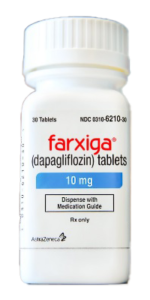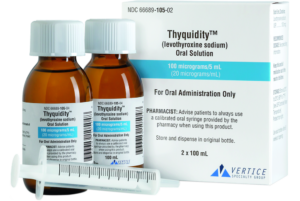Farxiga
Farxiga is a brand name for the medication dapagliflozin, which is primarily used to treat type 2 diabetes. It belongs to a class of medications called sodium-glucose co-transporter 2 (SGLT2) inhibitors. Farxiga works by helping the kidneys remove excess glucose from the bloodstream through urine.

Indications:
Type 2 diabetes: Farxiga is prescribed to improve glycemic control in adults with type 2 diabetes, either as a standalone treatment or in combination with other antidiabetic medications, including insulin.
Dosage
The recommended starting dose of Farxiga is usually 5 mg once daily, taken in the morning, with or without food. Your healthcare provider may adjust the dosage based on your response and tolerability. The maximum daily dose is 10 mg.
Usage and Administration
- Follow your healthcare provider’s instructions on how to take Farxiga.
- Take Farxiga at the same time each day to maintain consistent levels in your body.
- Swallow the tablet whole with a glass of water. Do not crush, chew, or break the tablet.
Precautions
→ Inform your healthcare provider about any medical conditions you have, especially if you have a history of kidney problems, urinary tract infections, liver disease, or if you are on dialysis.
→ Let your healthcare provider know about all the medications you are currently taking, including prescription drugs, over-the-counter medications, and herbal supplements.
→ If you are pregnant, planning to become pregnant, or breastfeeding, consult your healthcare provider before starting Farxiga.
Common side effects
- Genital yeast infections (in females and males)
- Urinary tract infections
- Increased urination
- Thirst
- Dehydration
- Low blood sugar (when used in combination with insulin or insulin secretagogues)
- Dizziness
- Nausea
It is essential to consult your healthcare provider if you experience any persistent or severe side effects.
Farxiga may increase the risk of ketoacidosis, a serious condition characterized by high levels of ketones in the blood. Seek medical attention immediately if you experience symptoms such as nausea, vomiting, stomach pain, tiredness, or difficulty breathing. Inform your healthcare provider if you experience signs of a urinary tract infection, such as pain or burning during urination, frequent urination, or blood in the urine.
Medarchive.us does not assume any responsibility for any aspect of healthcare administered with the aid of materials provided. The information contained herein is not intended to cover all possible uses, directions, precautions, warnings, drug interactions, allergic reactions, or adverse effects. The information provided on our Web or Videos does not endorse drugs, diagnose patients, or recommend therapy. If you have questions about the medication you are taking or want to start as treatment, check with your doctor or medical health care provider.







